Welcome New Year!
01/10/2024
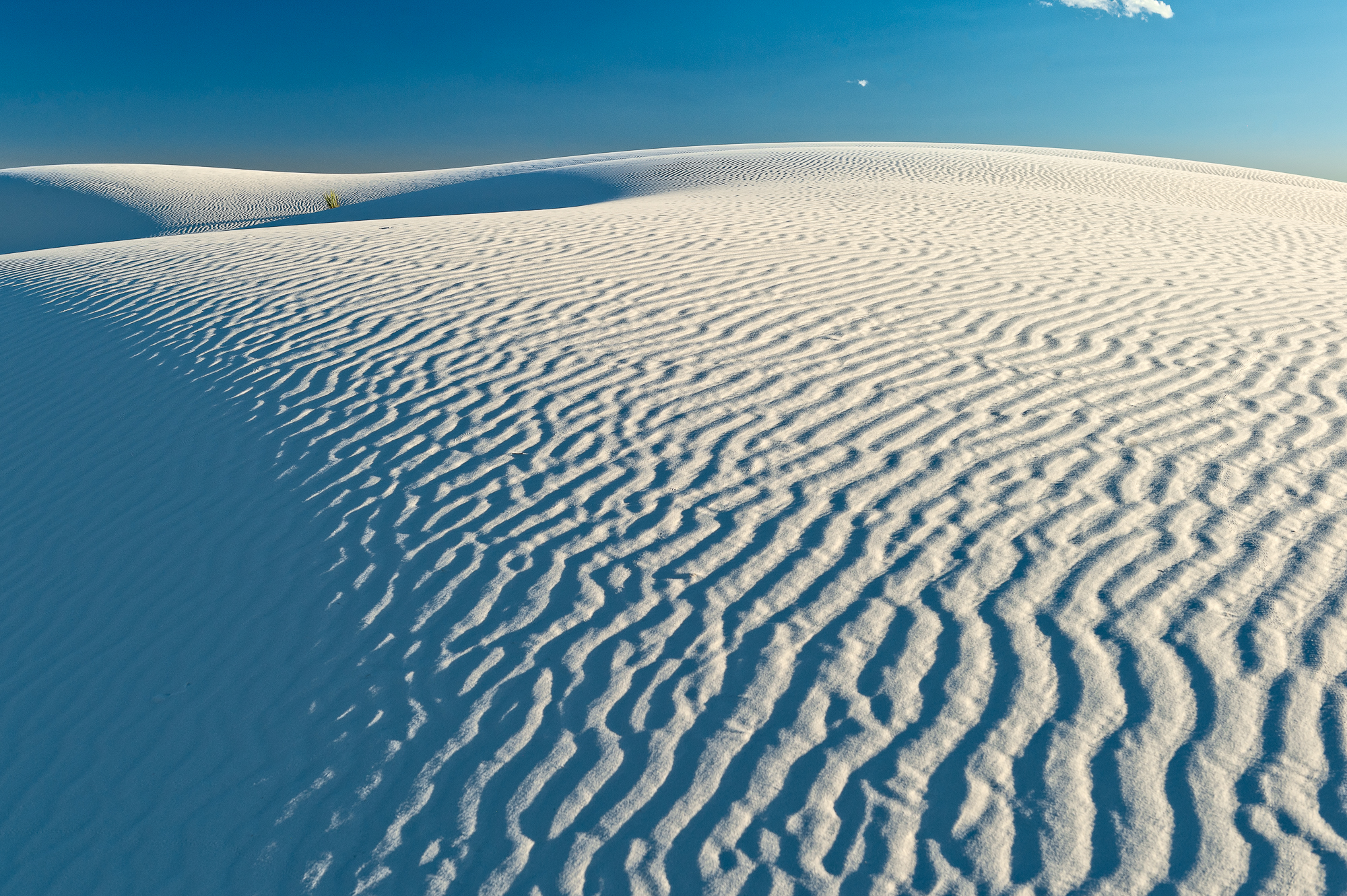
It is exciting to move into a new year that is fresh and clean and full of possibilities. What tracks do you want to make in the sand in the coming year?
I like to approach the New Year with gentle positive intentions rather than rigid or restrictive Resolutions that are hard to keep. It feels more supportive and stays with me longer to have a positive focus or a single word that inspires me.
The word Curiosity has been with me for the last few years as I learn to navigate a new phase in life. It has helped me to stay open to possibilities and to find ways to thrive in my own way.
Self-improvement is a lifelong project that requires kindness and compassion at least as much as commitment.
What lessons did you learn in 2023? What would you like to see in your future? What are you curious about?
Check out my new course for reflection, review, and renewal - Planning with the Seasons
Happy Winter Holidays!
12/20/2023
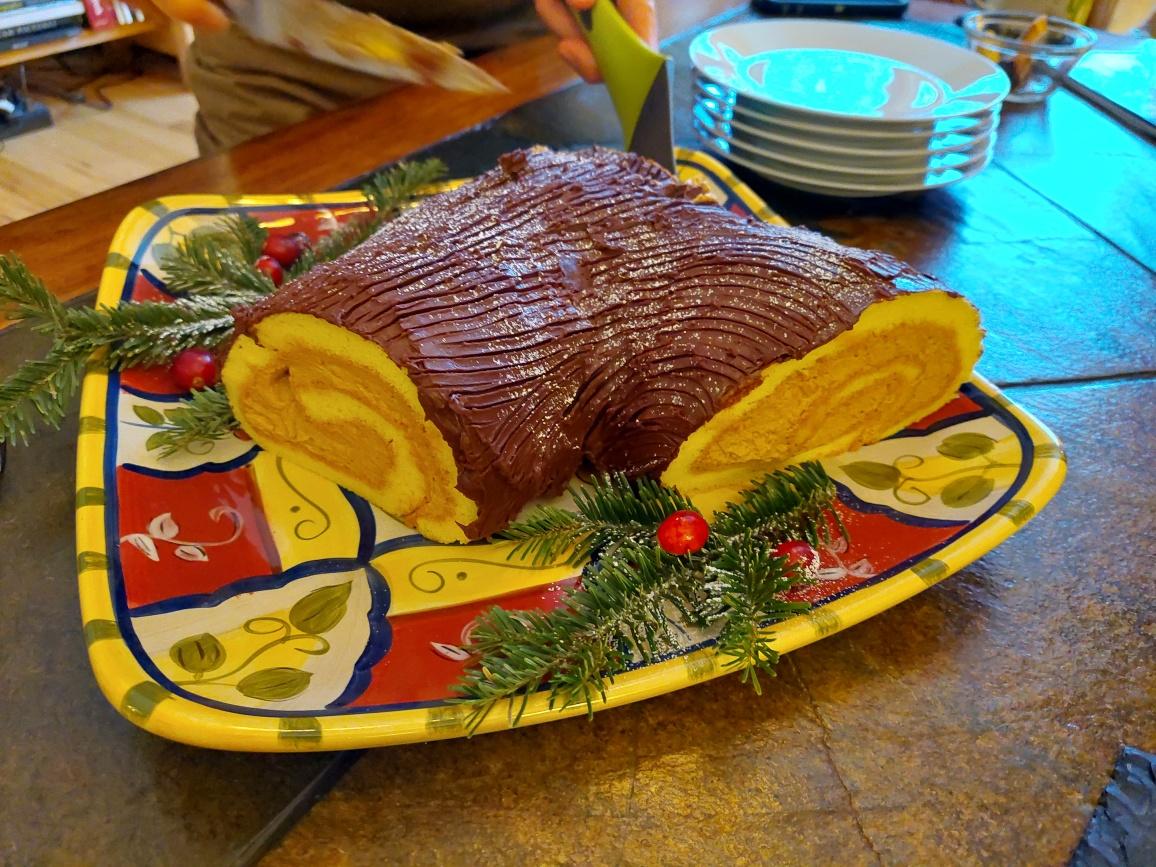
Midwinter's day is upon us - December 21st is the Winter Solstice! It is the shortest, darkest day in the Northern Hemisphere. It is the day that we turn the corner and start heading back into the light of spring and summer.
The winter season is full of holidays that bring light into the cold, dark days. It is fascinating to me how many cultures have traditions of winter celebrations that center on light, fire, candles, and stars. Our ancestors all over the world lived in close connection with nature and the changing of the seasons. They felt the cold and darkness more deeply than those of us with shelter, food, and electricity. Those sparks of light must have been inspiring, bringing the promise of warmer, brighter days to come.
This winter I am grateful for the comforts of home and connections with friends, family, and nature. It concerns me that in our modern, enlightened world there are still people who do not have those simple needs met. I find myself sending out a message of love in hopes that it will land where it is needed.
However you may be celebrating this year, whether lighting a candle on your own, or reveling with others, I wish you Peace and Love!
Finding Compassion Through Gratitude
11/22/2023
Gratitude is a powerful way to combat feelings of overwhelm, anxiety, and depression. It has been proven to help lower heart rate and blood pressure, reduce stress, and improve sleep. Even knowing all those benefits, the act of finding something to be grateful for can be challenging when things feel hopeless. Sometimes all it takes is a smile from a person at the grocery store or a hint of birdsong through the trees.
Gratitude is not a form of “toxic positivity.” It does not gloss over the horrible things happening around us. In fact, expressing gratitude can be a conscious effort not to be blinded by the trauma of all the imperfections and negative images surrounding us. It helps us to see beyond to the good that is still out there quietly carrying on.
Around the world, people are persecuted, treated unfairly, and judged for who they are, whether it is their race, culture, sex, sexual orientation, religion, or other differences. Understanding that there is past trauma and hurt behind so much of this behavior can help but does not excuse it. Focusing on these differences removes the humanity, the connections, and the feelings we all share.
I do not pretend to understand the complexities of political and historical injustices. It is painful to witness and of course so much more painful for those personally affected. It is important to acknowledge that grief and loss and not to brush over it.
Witnessing so much struggle is exhausting. This lack of compassion spreads to the earth and impacts the treatment of animals, plants, and the environment. People just don’t seem to have the strength to care. It feels like a global case of compassion fatigue that affects our home and our living conditions as it impacts all the other creatures on this warming planet.
What can we as individuals do? How can we cultivate compassion for the earth and for our fellow human beings?
Acknowledging our own feelings of trauma, past experiences, and grief is a place to start. If we hold these feelings in, they can fester and explode causing more trauma and destruction. Self-compassion for all that we have been through can reduce some of that strain. It may not be necessary or helpful to re-live these experiences, only to recognize that they occurred in the past. This can be a difficult process and therapy is highly recommended to help support and guide this self-exploration. We may not be able to change the world on our own, but we can work to improve our personal sense of peace through practicing self-compassion and bringing moments of gratitude into our everyday lives.
I certainly have my own pains and struggles. It is nothing like what is being experienced in large parts of the world. I can only be witness to this greater pain, to listen, to try my best to understand and see the many perspectives that complicate and yet also enrich our existence.
Gratitude is a way of seeing through all this conflict and negativity. Seeking out the beauty and compassion that still exists - the constants as we continue our daily journey around the sun. For me, connecting with nature brings me back to what is real. The basic building blocks of life are all around us. Yes, there is conflict, predation, and destruction in nature, but there is also creation, rebirth, and beauty. Humans can be excessively destructive. We also have the power for incredible innovation and creation. To see both sides and seek that counterbalance to the constant negative news cycles brings me hope and is a reminder of the possibilities for new growth.
Gratitude brings us back to the present moment, providing a break from concerns of the past or future. With gratitude comes compassion and connection, something this world could use more of. Sharing feelings of appreciation can go a long way to planting seeds of peace in our communities and greater circles.
As we move into the holiday season, I am grateful for the support of friends and family, the beauty and interconnectedness of the natural world that helps to keep me grounded, and the possibilities of expanding my knowledge and experiences in this wonderful life.
Wishing you gratitude in this season of introspection. May we all find more wisdom, compassion, and understanding.
Gratitude is not a form of “toxic positivity.” It does not gloss over the horrible things happening around us. In fact, expressing gratitude can be a conscious effort not to be blinded by the trauma of all the imperfections and negative images surrounding us. It helps us to see beyond to the good that is still out there quietly carrying on.
Around the world, people are persecuted, treated unfairly, and judged for who they are, whether it is their race, culture, sex, sexual orientation, religion, or other differences. Understanding that there is past trauma and hurt behind so much of this behavior can help but does not excuse it. Focusing on these differences removes the humanity, the connections, and the feelings we all share.
I do not pretend to understand the complexities of political and historical injustices. It is painful to witness and of course so much more painful for those personally affected. It is important to acknowledge that grief and loss and not to brush over it.
Witnessing so much struggle is exhausting. This lack of compassion spreads to the earth and impacts the treatment of animals, plants, and the environment. People just don’t seem to have the strength to care. It feels like a global case of compassion fatigue that affects our home and our living conditions as it impacts all the other creatures on this warming planet.
What can we as individuals do? How can we cultivate compassion for the earth and for our fellow human beings?
Acknowledging our own feelings of trauma, past experiences, and grief is a place to start. If we hold these feelings in, they can fester and explode causing more trauma and destruction. Self-compassion for all that we have been through can reduce some of that strain. It may not be necessary or helpful to re-live these experiences, only to recognize that they occurred in the past. This can be a difficult process and therapy is highly recommended to help support and guide this self-exploration. We may not be able to change the world on our own, but we can work to improve our personal sense of peace through practicing self-compassion and bringing moments of gratitude into our everyday lives.
I certainly have my own pains and struggles. It is nothing like what is being experienced in large parts of the world. I can only be witness to this greater pain, to listen, to try my best to understand and see the many perspectives that complicate and yet also enrich our existence.
Gratitude is a way of seeing through all this conflict and negativity. Seeking out the beauty and compassion that still exists - the constants as we continue our daily journey around the sun. For me, connecting with nature brings me back to what is real. The basic building blocks of life are all around us. Yes, there is conflict, predation, and destruction in nature, but there is also creation, rebirth, and beauty. Humans can be excessively destructive. We also have the power for incredible innovation and creation. To see both sides and seek that counterbalance to the constant negative news cycles brings me hope and is a reminder of the possibilities for new growth.
Gratitude brings us back to the present moment, providing a break from concerns of the past or future. With gratitude comes compassion and connection, something this world could use more of. Sharing feelings of appreciation can go a long way to planting seeds of peace in our communities and greater circles.
As we move into the holiday season, I am grateful for the support of friends and family, the beauty and interconnectedness of the natural world that helps to keep me grounded, and the possibilities of expanding my knowledge and experiences in this wonderful life.
Wishing you gratitude in this season of introspection. May we all find more wisdom, compassion, and understanding.
For the Love of Trees
10/13/2023
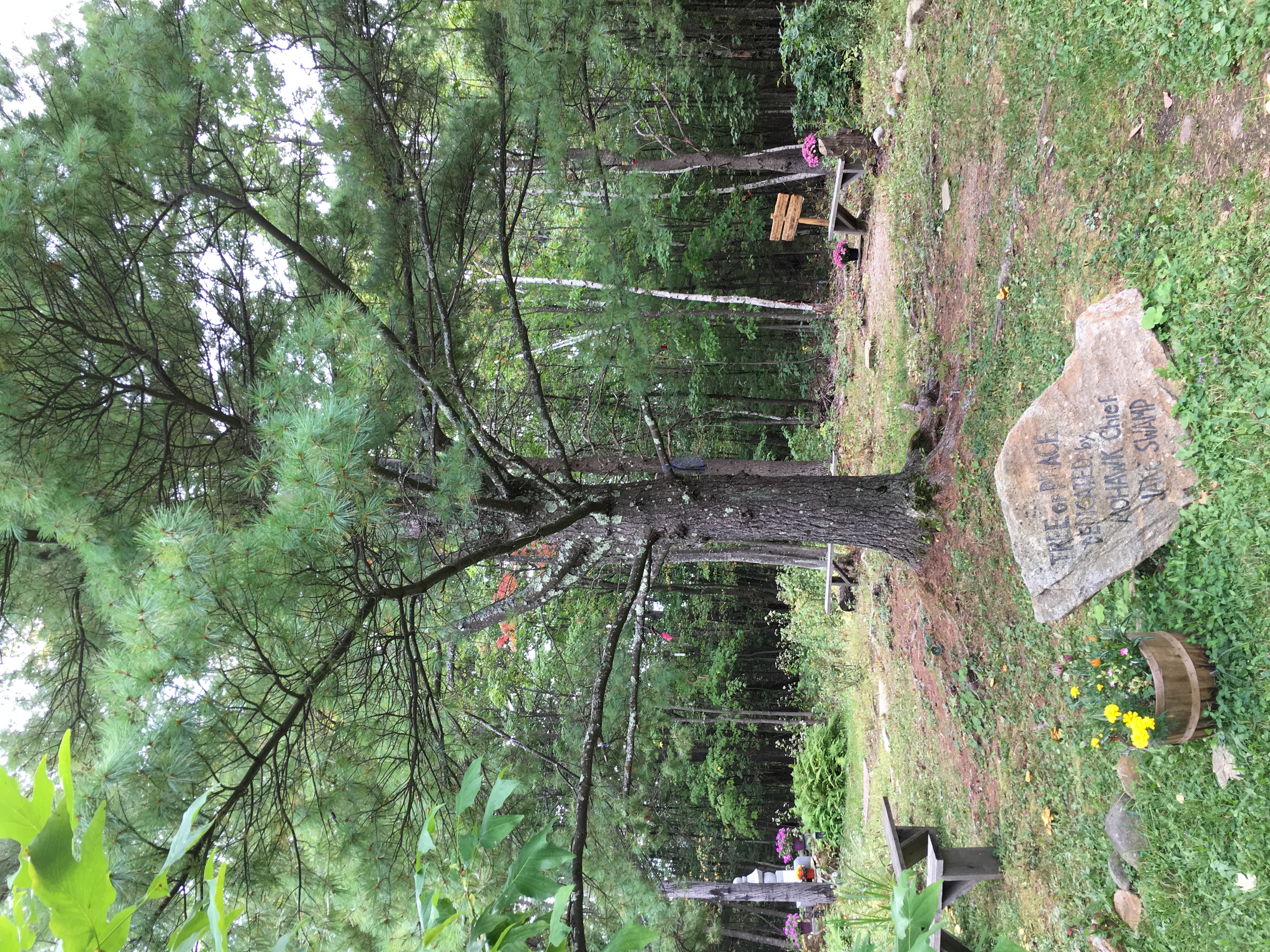
On a visit to the Peace Pagoda in Leverett Massachusetts, I found this tree dedicated by Jake Swamp (Tree of Peace Society) in 1985. Among many contributions to peace and conservation, Jake Swamp is the author of Thanksgiving Address: Greetings to the Natural World.
— — —
For the Love of Trees
The Autumn season draws our attention to the trees, particularly deciduous trees going through such beautiful color changes and losing their leaves. The changing winds bring out the music of the trees with the rustling of the leaves hanging onto their branches, falling to the ground, and dancing around at our feet.
We humans can build attachments to special trees in our lives, those that grow up with us and die in our lifetimes, and those that may live on for hundreds of years longer if given the chance.
There are many stories of grief over the loss of a single special tree. Recently in the UK, a beloved tree, the Sycamore Gap tree in Northumberland, was cut down by someone who certainly did not feel a connection to the trees. The public outrage that followed created a reminder that though we may build an attachment to one specific tree, billions of trees are estimated to be cut down every year with the primary cause being deforestation.
This destruction, of course, has a lasting impact on the global climate and the overall health of the earth and her inhabitants. Beyond the emotional and often spiritual connections humans feel for the trees, we share our breaths with the trees. They take in the carbon dioxide that we breathe out and produce oxygen that we breathe in. It is a natural exchange that has evolved together since life began on Earth.
Building connections with other life forms, nature, and the natural cycles brings out our humanity. It can create rich relationships on its own and remind us of connections with people in our lives.
This is your reminder to breathe with the trees!
Grief, Loss, and Trees
10/13/2023
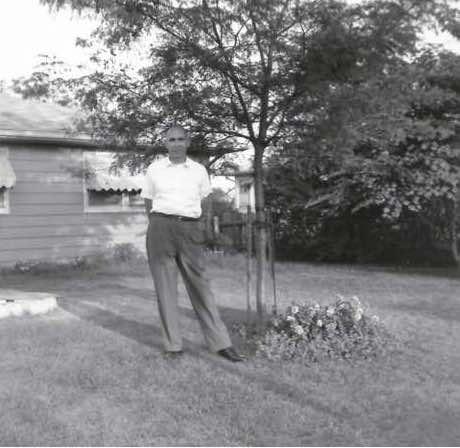
The following story is from a few years ago and continues to express the love, grief, and attachment we can feel with trees as strongly as with any other living beings. This story and the one above - For the Love of Trees - has been on my mind this season as we move into fall.
———
1/5/2020
Recently I stopped by a dear client’s home to deliver herbal medicine for her cat and happened to arrive in the middle of an incredibly sad event. Her beloved Moraine locust tree that had been planted by her father about 60 years ago was being removed. The beautiful shade tree had reached the end of its life and, due to internal decay, had become a potential hazard.
As a veterinarian who provides palliative care and home euthanasia services, there was a distinct familiarity with this moment. The machinery required was much bigger and more overwhelming than mine, but at the same time, I had stepped into a very somber moment of a treasured life passing. There were photos displayed of the tree as it had grown through the years and stood sentry by their home, witnessing her family’s entire history.
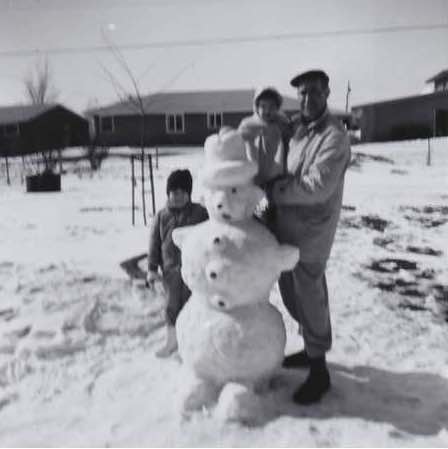
The photo above showing the sapling in the background with her father holding a young version of herself and her sister standing alongside was so incredibly touching. There were tears and hugs and she knew right away that I understood the added depth of her grief. The cat that I care for belonged to her deceased parents and she is now the guardian of their cat and their home. Two years earlier, she had been there for me with words and tears for my grief as my father was dying. It was clear that this moment, cutting down and taking away this tree, was about so much more. Later she told me that it had felt like losing her Mom and Dad all over again.
Events like this can bring up so many emotions, and often we don’t recognize all of the connections. I was glad to have been there to share in this moment and catch her stories of the loss of such a special living being. What a beautiful way to celebrate the many intertwined lives with photos and the intentional honoring of memories.
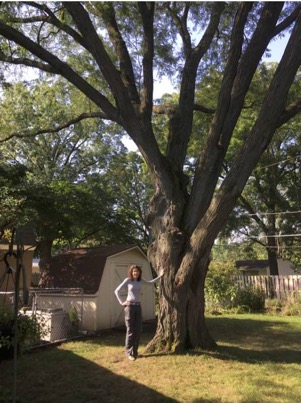
Harvest Time!
09/06/2023

Autumn is on its way! Animals and people are busy harvesting the fruits of summer's labors. We had a bounty of peaches and peppers are doing well too!
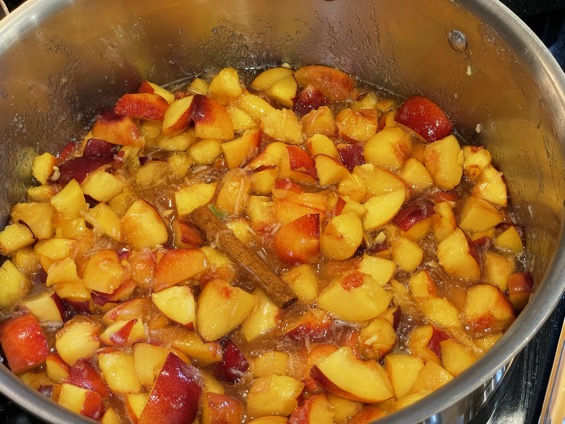
Here in Iowa we are feeling some cooler temperatures as the wind has shifted to stronger breezes from the northwest. Leaves are showing the first signs of yellowing and many plants have finished flowering and now have seeds drying in preparation for withstanding the winter cold.
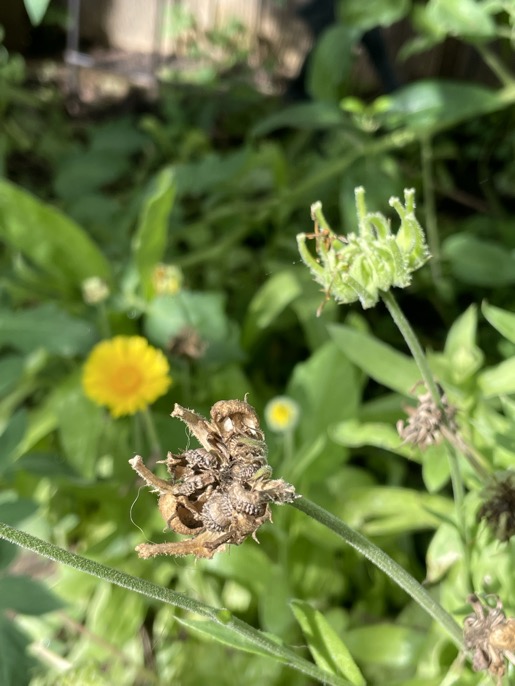
Calendula officinalis
Fall is a time for stocking up and building strength in preparation for winter. It is also a time for coming together in celebration of the harvest and sharing stories around an outdoor fire. As we enjoy this cooler weather, a respite between summer and winter, it is the perfect time to offer support to ourselves and to each other.
What do you need to stock up on for winter? Physically, Mentally, and Metaphorically?
Gift Packages Coming Together!
08/20/2023
Preparations for the 2023 Self-Care course session are in full swing!
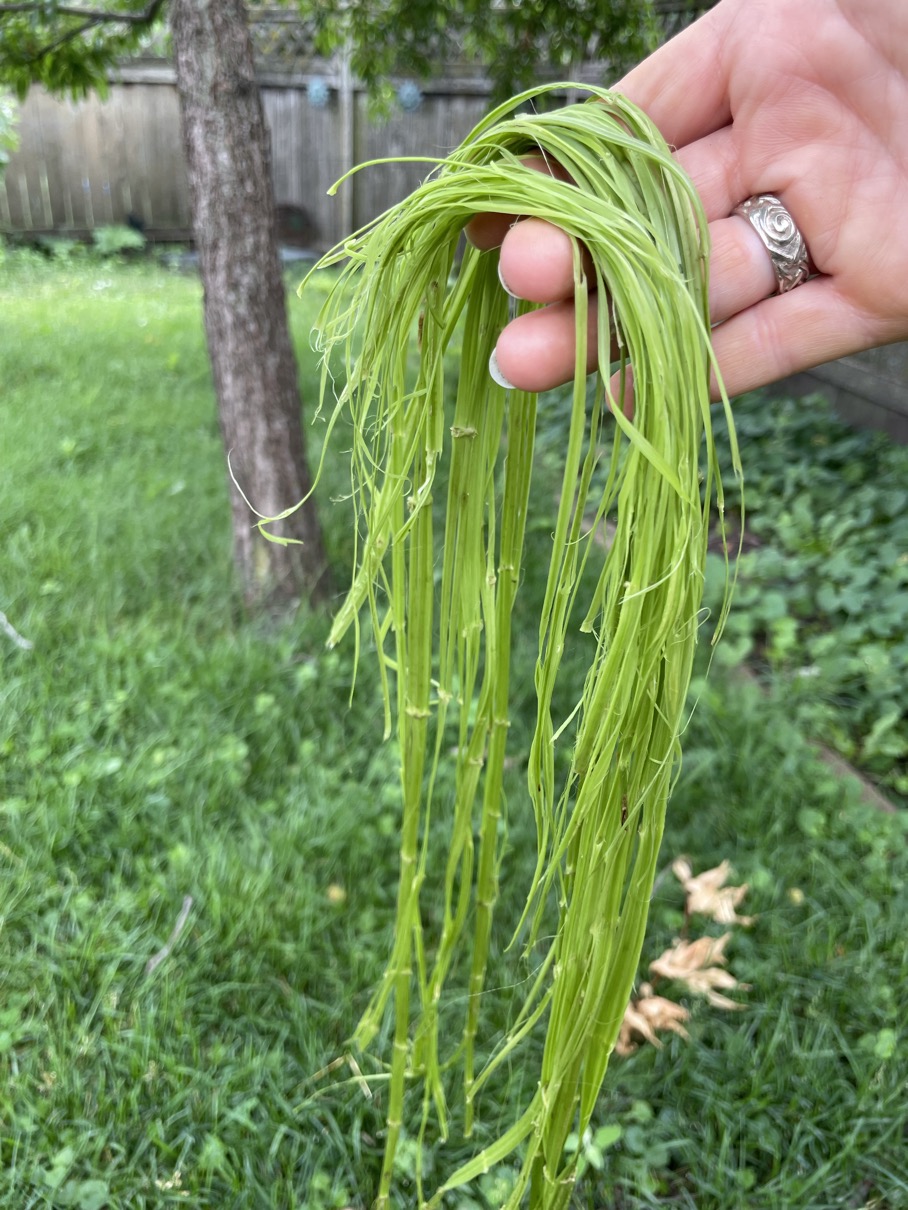
Here is a glimpse of the gift package assembly process. Mailed at the beginning of the course in September, these monthly gifts are intended to add a physical and sensory component enhancing mindfulness and connection to the natural world.
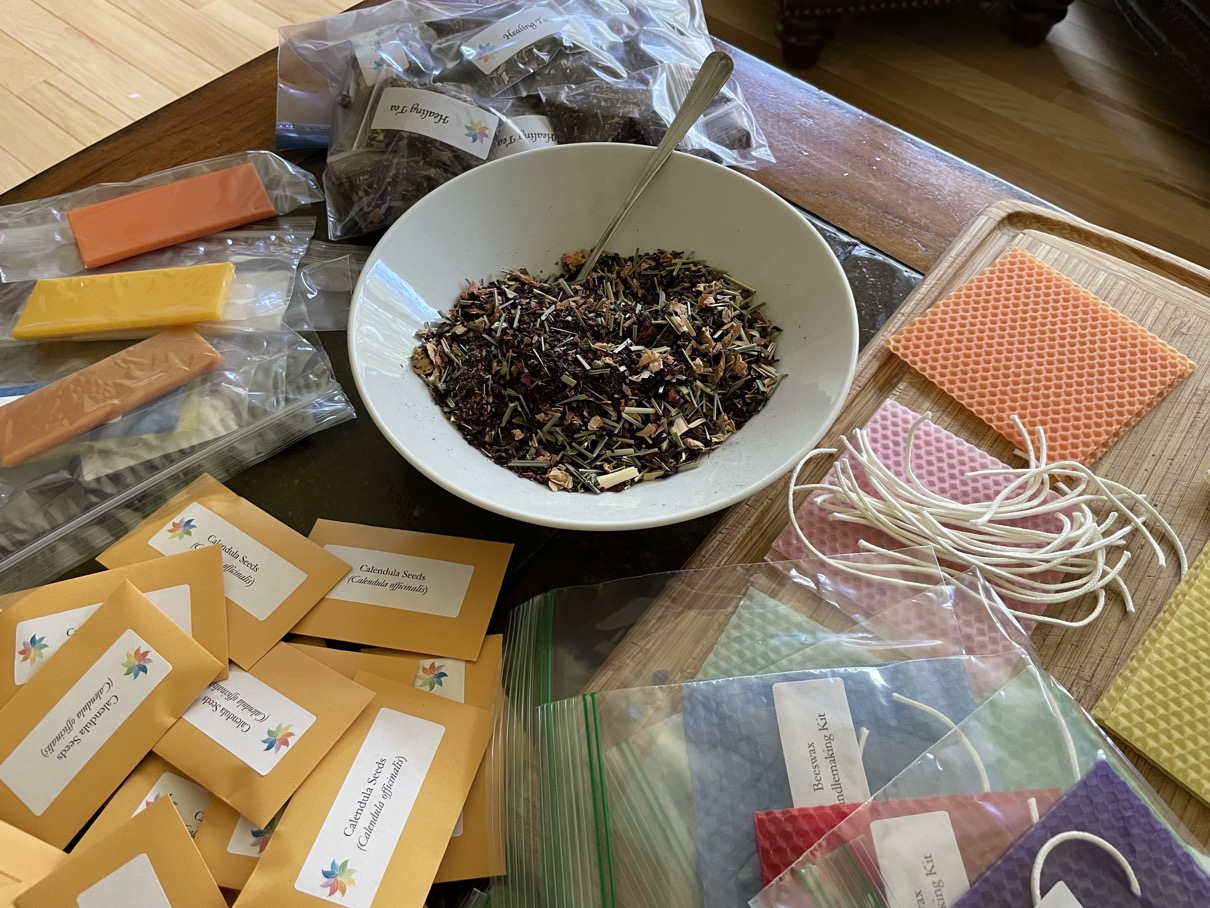
The gifts are chosen with care to bring out the scents, tastes, activities, and moods that express each season as we move around the wheel. Some are more energizing, some creative, some inspiring, and some relaxing. They all give ideas to enhance your exploration of nature and self!
There is still time to join us in the Self-Care Through the Cycles of Nature class!

Here is a glimpse of the gift package assembly process. Mailed at the beginning of the course in September, these monthly gifts are intended to add a physical and sensory component enhancing mindfulness and connection to the natural world.

The gifts are chosen with care to bring out the scents, tastes, activities, and moods that express each season as we move around the wheel. Some are more energizing, some creative, some inspiring, and some relaxing. They all give ideas to enhance your exploration of nature and self!
There is still time to join us in the Self-Care Through the Cycles of Nature class!
Exploring Summer
07/27/2023
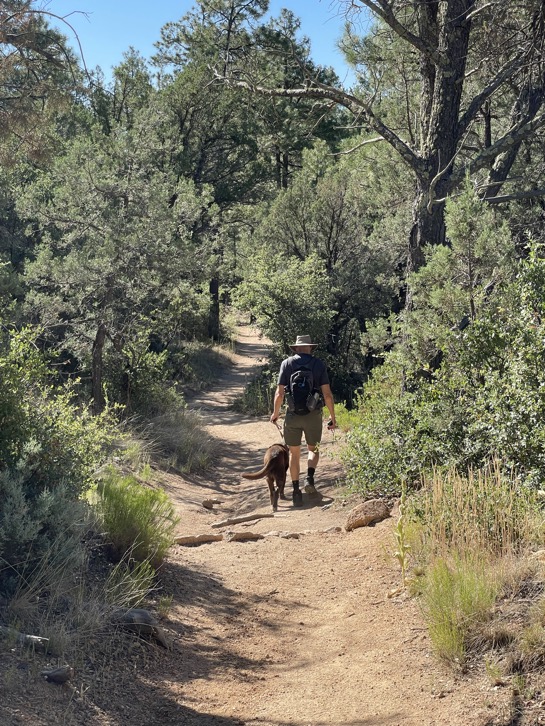
Summer always brings out a feeling of adventure and exploration for me. It has often been a time of traveling and seeing new places and learning new perspectives. With family in north-central Arizona, I have frequent opportunities to visit and am learning about that woodland ecosystem of piñon-juniper and ponderosa pine. On a recent hike in the Granite Mountain Wilderness, we encountered some breathtaking vistas and invigorating pine air, with fascinating and familiar plant life.

I love the rounded granite rock formations and boulders found all over the Prescott area. Here there were several common mullein (Verbascum thapsus) plants happily growing among them. Mullein was introduced from Europe over 300 years ago and is found throughout North America. Yarrow (Achillea millefolia) a native North American, was also thriving along the path.
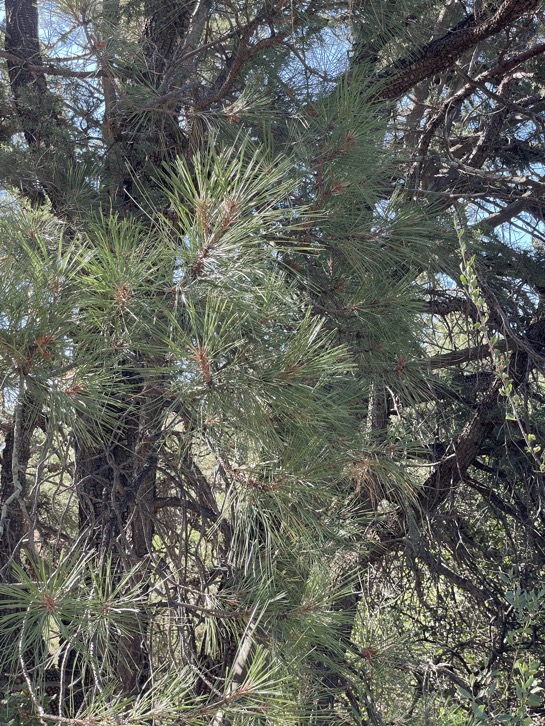
Ponderosa pine with its longer needles (3-7”) in clumps of 3, towers above the other plant life (up to 120 ft), while alligator juniper (Juniperus deppeana) with their distinct scale patterned bark draw attention to eye-level.
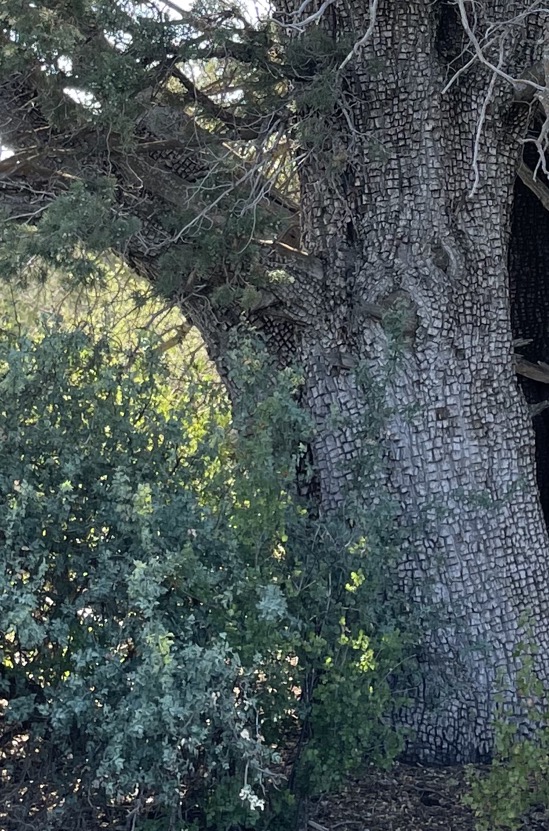
Below that, bushy scrub oaks (Quercus turbinella) with tiny holly-looking leaves (~1”) dot the landscape, some stretching taller with thickly gnarled trunks. Gambel oak (Quercus gambelii) are distinctly different, having larger, strongly lobed, deep green leaves (2-5”).
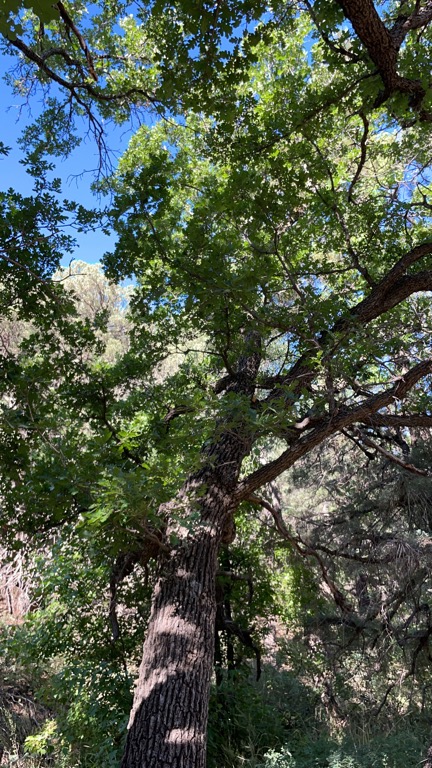
Noticing these similarities and differences in the plants around me brings a mindfulness to the experience that not only improves my botanical knowledge, but also helps my brain to let go of other thoughts. Because it is something I really enjoy, spending time like this in calm, focused curiosity is an excellent form of self-care too!
What do you enjoy so much that it pulls you into a state of calm focus?
Nature Journaling and Self-Care
06/11/2023
This weekend, I attended the online Nature Journal Educator Workshop put on by Wild Wonder founded by John Muir Laws, a skilled nature educator, author, and amazing artist.
Most of the attendees are educators for children, trying to find ways to bring children out into nature, to spark interest and observation skills while providing an avenue for early science education and environmental awareness. This is how I started nature journaling when my children were young. It was a fun way to observe weather patterns and changes through the seasons and gave us captivating stories about what the animals were doing outside and what plants were growing. From my own experiences, I realized that nature journaling was also a great way to bring adults back outside!
The topics at this conference ranged from brain development, building awareness and curiosity, to giving positive, supportive feedback. Something that I really love about this kind of teaching is the use of curiosity to engage interest. When you are curious, you become less anxious. It actually releases dopamine and makes you feel happier! What a great pathway for self-care.
Observing nature is a simple way to increase mindfulness overall and enriches our daily lives. Nature journaling takes it one step further by engaging our attention and requiring us to describe back what we see through words and pictures. The quality of the artwork is not what is important; the questions and curiosity that journaling draws forth are the goals. This is what pulls us into a deeper understanding. Curiosity drives interest, motivates us, and can bring some of the best innovations in all aspects of life.
John Muir Laws shared the following quote:
“The most exciting phrase to hear in science, the one that heralds new discoveries, is not ‘Eureka’ but ‘That’s funny . . .’”
- Isaac Asimov – science fiction author and biochemistry professor
What are you Curious about?
In the Self-Care Through the Cycles of Nature course, we explore mindfulness, curiosity, and connection, increasing awareness by journaling and ongoing discussions as we travel through the year.
Registration is now open! Click here for details.
Most of the attendees are educators for children, trying to find ways to bring children out into nature, to spark interest and observation skills while providing an avenue for early science education and environmental awareness. This is how I started nature journaling when my children were young. It was a fun way to observe weather patterns and changes through the seasons and gave us captivating stories about what the animals were doing outside and what plants were growing. From my own experiences, I realized that nature journaling was also a great way to bring adults back outside!
The topics at this conference ranged from brain development, building awareness and curiosity, to giving positive, supportive feedback. Something that I really love about this kind of teaching is the use of curiosity to engage interest. When you are curious, you become less anxious. It actually releases dopamine and makes you feel happier! What a great pathway for self-care.
Observing nature is a simple way to increase mindfulness overall and enriches our daily lives. Nature journaling takes it one step further by engaging our attention and requiring us to describe back what we see through words and pictures. The quality of the artwork is not what is important; the questions and curiosity that journaling draws forth are the goals. This is what pulls us into a deeper understanding. Curiosity drives interest, motivates us, and can bring some of the best innovations in all aspects of life.
John Muir Laws shared the following quote:
“The most exciting phrase to hear in science, the one that heralds new discoveries, is not ‘Eureka’ but ‘That’s funny . . .’”
- Isaac Asimov – science fiction author and biochemistry professor
What are you Curious about?
In the Self-Care Through the Cycles of Nature course, we explore mindfulness, curiosity, and connection, increasing awareness by journaling and ongoing discussions as we travel through the year.
Registration is now open! Click here for details.
Energy Management
05/30/2023
Time management has been touted as the big key to productivity for years, and I won’t argue with that, it is important. As a procrastinator myself who struggles with the perfectionism of doing a thing “just right” or not doing it at all, time is a blessing and a curse.
What if, along with counting the hours in your day, you also consider your energy levels throughout the day? When are you most clear and focused? When is a better time for quiet activities that are necessary but require less energy? What do you need to be more sustainably productive, to avoid burning out that enthusiastic energy that comes at the start of a project?
What would you rather be doing with your time? How can you do more of that so you can recharge your energy for the needed tasks of work? Putting as much value on resting and recharging as you do on “productive” work can actually increase productivity and bring better life balance.
Living with the natural cycles, circadian rhythms and regular patterns through the day and the year, is a way of managing or following our energy levels to be the most productive, but also to live in a more balanced peaceful way.
Spend a year with us exploring the cycles of nature and learn how they can help re-energize your life.
Class registration opens soon!
What if, along with counting the hours in your day, you also consider your energy levels throughout the day? When are you most clear and focused? When is a better time for quiet activities that are necessary but require less energy? What do you need to be more sustainably productive, to avoid burning out that enthusiastic energy that comes at the start of a project?
What would you rather be doing with your time? How can you do more of that so you can recharge your energy for the needed tasks of work? Putting as much value on resting and recharging as you do on “productive” work can actually increase productivity and bring better life balance.
Living with the natural cycles, circadian rhythms and regular patterns through the day and the year, is a way of managing or following our energy levels to be the most productive, but also to live in a more balanced peaceful way.
Spend a year with us exploring the cycles of nature and learn how they can help re-energize your life.
Class registration opens soon!

